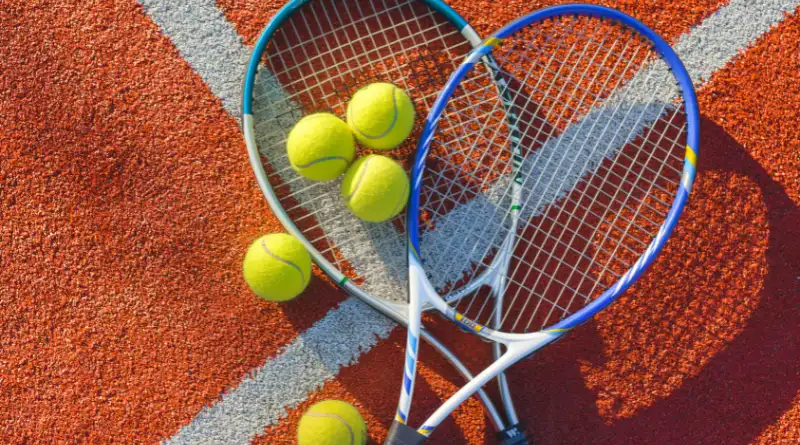How Tennis Rackets Have Changed – IELTS Reading With Answers
Practice How Tennis Rackets Have Changed IELTS Academic Reading Test with Answers, Explanation, Location, and a free PDF copy. You should spend about 20 minutes on the following questions:
How Tennis Rackets Have Changed Reading Passage
In 2016, the British professional tennis player Andy Murray was ranked as the world’s number one. It was an incredible achievement by any standard – made even more remarkable by the fact that he did this during a period considered to be one of the strongest in the sport’s history, competing against the likes of Rafael Nadal, Roger Federer and Novak Djokovic, to name just a few. Yet five years previously, he had been regarded as a talented outsider who entered but never won the major tournaments. [Que. 1]
Of the changes that account for this transformation, one was visible and widely publicised: in 2011, Murray invited former number one player Ivan Lendl onto his coaching team – a valuable addition that had a visible impact on the player’s playing style. Another change was so subtle as to pass more or less unnoticed. Like many players, Murray has long preferred a racket that consists of two types of string: one for the mains (verticals) and another for the crosses (horizontals). While he continued to use natural string in the crosses, in 2012 he switched to a synthetic string for the mains. A small change, perhaps, but its importance should not be underestimated. [Que. 2]
The modification that Murray made is just one of a number of options available to players looking to tweak their rackets in order to improve their games. ‘Touring professionals have their rackets customised to their specific needs,’ says Colin Triplow, a UK-based professional racket stringer. ‘It’s a highly important part of performance maximisation.’ Consequently, the specific rackets used by the world’s elite are not actually readily available to the public; rather, each racket is individually made to suit the player who uses it. Take the US professional tennis players Mike and Bob Bryan, for example: ‘We’re very particular with our racket specifications,’ they say. ‘All our rackets are sent from our manufacturer to Tampa, Florida, where our frames go through a . . . thorough customisation process.’ They explain how they have adjusted not only racket length, but even experimented with different kinds of paint. [Que. 8] The rackets they use now weigh more than the average model and also have a denser string pattern (i.e. more crosses and mains). [Que. 4]
The primary reason for these modifications is simple: as the line between winning and losing becomes thinner and thinner, even these slight changes become more and more important. As a result, players and their teams are becoming increasingly creative with the modifications to their rackets as they look to maximise their competitive advantage.
Racket modifications mainly date back to the 1970s, when the amateur German tennis player Werner Fischer started playing with the so-called spaghetti-strung racket. [Que. 5] It created a string bed that generated so much topspin that it was quickly banned by the International Tennis Federation. [Que. 9] However, within a decade or two, racket modification became a regularity. Today it is, in many ways, an aspect of the game that is equal in significance to nutrition or training. [Que. 10]
Modifications can be divided into two categories: those to the string bed and those to the racket frame. The former is far more common than the latter: the choice of the strings and the tension with which they are installed is something that nearly all professional players experiment with. They will continually change it depending on various factors including the court surface, climatic conditions, and game styles. [Que. 6] Some will even change it depending on how they feel at the time.
At one time, all tennis rackets were strung with natural gut made from the outer layer of sheep or cow intestines. [Que. 11] This all changed in the early 1990s with the development of synthetic strings that were cheaper and more durable. They are made from three materials: nylon (relatively durable and affordable), Kevlar (too stiff to be used alone) or co-polyester (polyester combined with additives that enhance its performance). Even so, many professional players continue to use a ‘hybrid set-up’, where a combination of both synthetic and natural strings are used.
Of the synthetics, co-polyester is by far the most widely used. It’s a perfect fit for the style of tennis now played, where players tend to battle it out from the back of the court rather than coming to the net. Studies indicate that the average spin from a co-polyester string is 25% greater than that from natural string or other synthetics. In a sense, the development of co-polyester strings has revolutionised the game.
However, many players go beyond these basic adjustments to the strings and make changes to the racket frame itself. For example, much of the serving power of US professional player Pete Sampras was attributed to the addition of four to five lead weights onto his rackets [Que. 12], and today many professionals have the weight adjusted during the manufacturing process. [Que. 7]
Other changes to the frame involve the handle. Players have individual preferences for the shape of the handle and some will have the handle of one racket moulded onto the frame of a different racket. Other players make different changes. The professional Portuguese player Gonçalo Oliveira replaced the original grips of his rackets with something thinner because they had previously felt uncomfortable to hold. [Que. 13]
Racket customisation and modification have pushed the standards of the game to greater levels that few could have anticipated in the days of natural strings and heavy, wooden frames, and it’s exciting to see what further developments there will be in the future.
Questions 1-7
Do the following statements agree with the information given in ‘How Tennis Rackets Have Changed’ reading passage?
In boxes 1–7 on your answer sheet, write
- TRUE – if the statement agrees with the information
- FALSE – if the statement contradicts the information
- NOT GIVEN – if there is no information on this
Q1) People had expected Andy Murray to become the world’s top tennis player for at least five years before 2016.
Q2) The change that Andy Murray made to his rackets attracted a lot of attention.
Q3) Most of the world’s top players take a professional racket stringer on tour with them.
Q4) Mike and Bob Bryan use rackets that are light in comparison to the majority of rackets.
Q5) Werner Fischer played with a spaghetti-strung racket that he designed himself.
Q6) The weather can affect how professional players adjust the strings on their rackets.
Q7) It was believed that the change Pete Sampras made to his rackets contributed to his strong serve.
Answers 1-7
| Q. No | Answer | Location | Explanation |
|---|---|---|---|
| 1 | FALSE | 1st paragraph | This statement ”Yet five years previously, he had been regarded as a talented outsider who entered but never won the major tournaments.” contradicts with the information. |
| 2 | FALSE | 2nd paragraph | This statement “Another change was so subtle as to pass more or less unnoticed. Like many players, Murray has long preferred a racket that consists of two types of string: one for the mains (verticals) and another for the crosses (horizontals). While he continued to use natural string in the crosses, in 2012 he switched to a synthetic string for the mains. A small change, perhaps, but its importance should not be underestimated.” contradicts with the information. |
| 3 | NOT GIVEN | – | There is no information on this. |
| 4 | FALSE | 3rd paragraph | This statement “The rackets they use now weigh more than the average model and also have a denser string pattern (i.e. more crosses and mains).” contradicts with the information. |
| 5 | NOT GIVEN | – | There is no information on this. |
| 6 | TRUE | 6th paragraph | This statement “They will continually change it depending on various factors including the court surface, climatic conditions, and game styles.” agrees with the information. |
| 7 | TRUE | 9th paragraph | This statement “Serving power of US professional player Pete Sampras was attributed to the addition of four to five lead weights onto his rackets, and today many professionals have the weight adjusted during the manufacturing process.” agrees with the information. |
Related Reading: An Ideal City Reading Passage With Answers
Questions 8-13
Complete the notes below.
Choose ONE WORD ONLY from the passage for each answer.
Write your answers in boxes 8–13 on your answer sheet.
THE TENNIS RACKET AND HOW IT HAS CHANGED
- Mike and Bob Bryan made changes to the types of 8………………… used on their racket frames.
- Players were not allowed to use the spaghetti-strung racket because of the amount of 9………………… it created.
- Changes to rackets can be regarded as being as important as players’ diets or the 10………………… they do.
- All rackets used to have natural strings made from the 11………………… of animals.
- Pete Sampras had metal 12………………… put into the frames of his rackets.
- Gonçalo Oliveira changed the 13………………… on his racket handles.
Answers 8-13
| Q. No. | Answer | Location | Explanation |
|---|---|---|---|
| 8 | PAINT | 3rd paragraph | Look at the text… They explain how they have adjusted not only racket length, but even experimented with different kinds of paint. |
| 9 | TOPSPIN | 5th paragraph | In the fifth paragraph, there is a line that says… It created a string bed that generated so much topspin that it was quickly banned by the International Tennis Federation. |
| 10 | TRAINING | 5th paragraph | In the last line of the fifth paragraph, the author says… Today it is, in many ways, an aspect of the game that is equal in significance to nutrition or training. |
| 11 | INTESTINES | 7th paragraph | In the seventh paragraph, you’ll find… At one time, all tennis rackets were strung with natural gut made from the outer layer of sheep or cow intestines. |
| 12 | WEIGHTS | 9th paragraph | The text clearly says Pete Sampras was attributed to the addition of four to five lead weights onto his rackets. |
| 13 | GRIPS | 10th paragraph | It is given in the text that the professional Portuguese player Gonçalo Oliveira replaced the original grips of his rackets with something thinner because they had previously felt uncomfortable to hold. |
Free PDF Copy of How Tennis Rackets Have Changed
How-tennis-rackets-have-changedRelated Reading: Living With Artificial Intelligence Reading Passage With Answers


![[IELTS 16] General Training Reading Test 2](https://cictalks.com/wp-content/uploads/2021/10/Cambridge-ielts-16-General-training-reading-test-2-answer-key-390x205.png)

